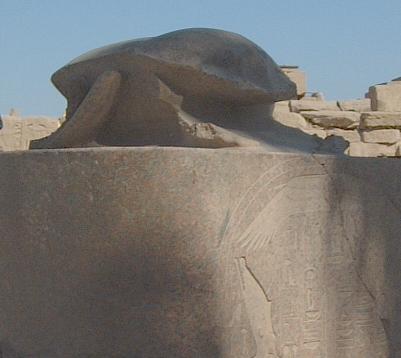
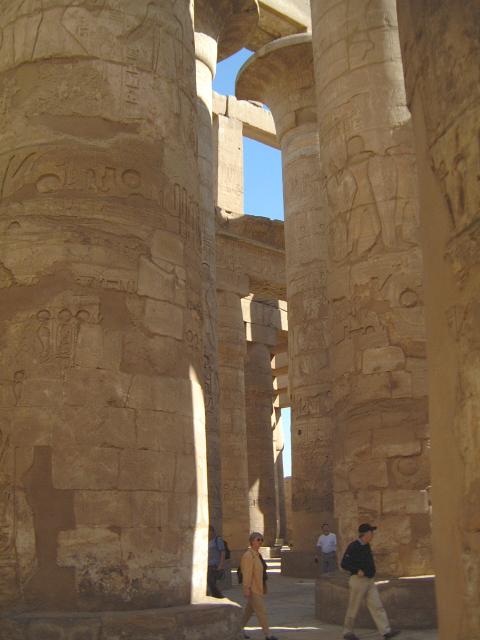
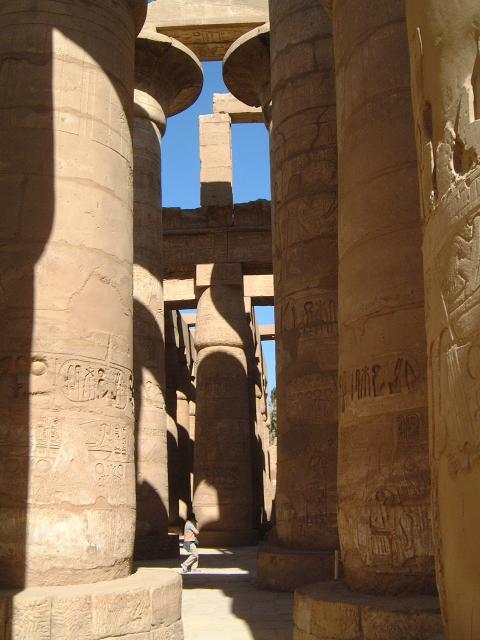
This unusual statue of an insect (a scarab beetle)
is nearly a metre long.


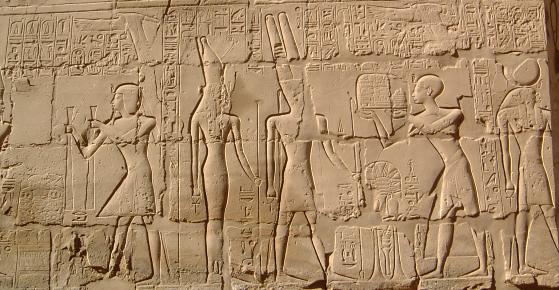
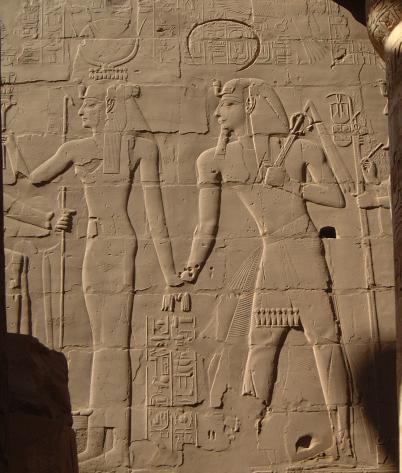
The temple of Luxor dates from about the same period as the Karnak temple,
but is much smaller. Both temples have an avenue of sphinxes outside
the entrance; this is the avenue at Luxor, which is in better
condition than Karnak's.
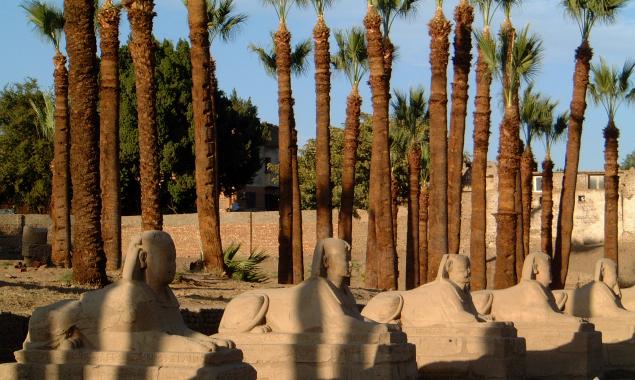
In front of the entrance structure were originally two
obelisks; only one is left, the other having been stolen by the French
in 1833.
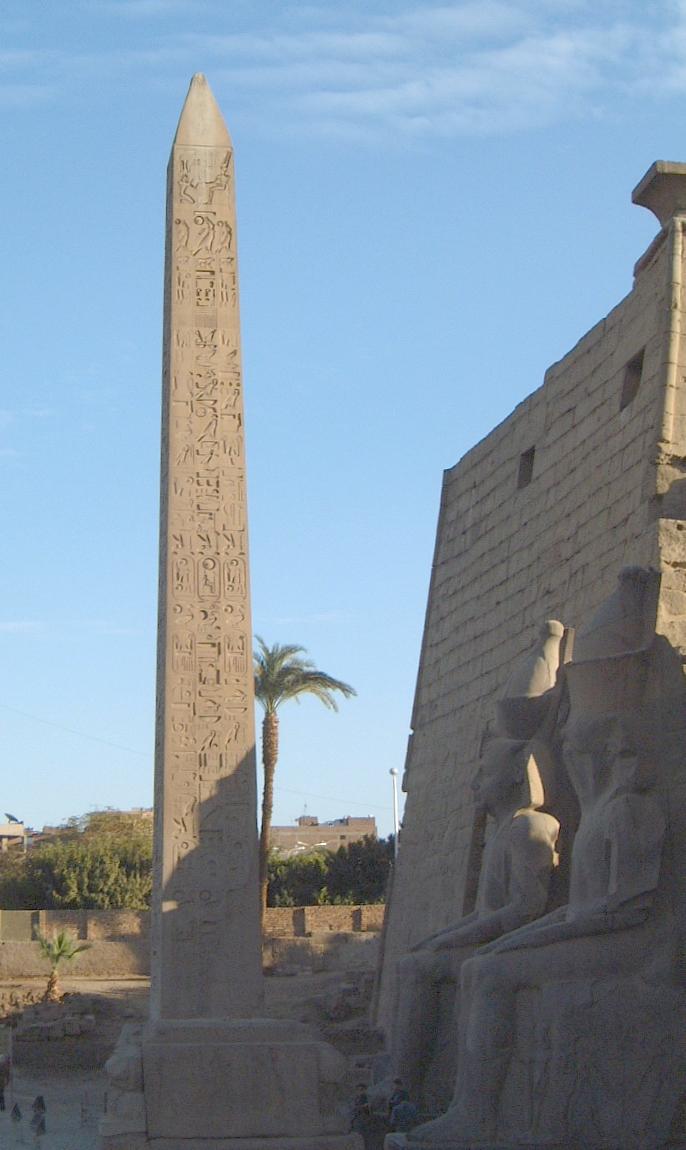
Incidentally, the entrance structure of a Pharaonic temple is called
a "pylon", and until the twentieth century this was the main meaning of
the word.
The temple at Luxor is not as impressive as the ruins of Karnak.
However, it is on the whole better preserved, despite the Romans
(who added a temple of their own at the southern end of the
site), the Muslims (who built a mosque inside the temple), and the French
(see above).

In sheltered places
there are carvings which retain their original detail - and in this
case, elegance.
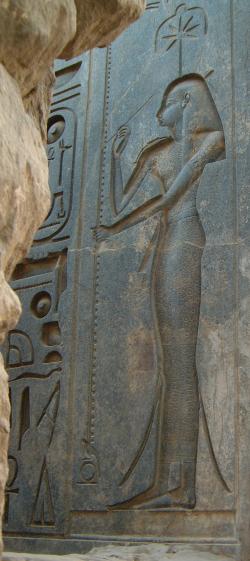
This overall view, at sunset, shows most of the temple except the
entrance pylon (which is off to the left). The tops of the pillars
represent the papyrus plant - at the right the unopened buds,
at the left the opened papyrus flower.
